The History Of Lighting The Christmas Tree
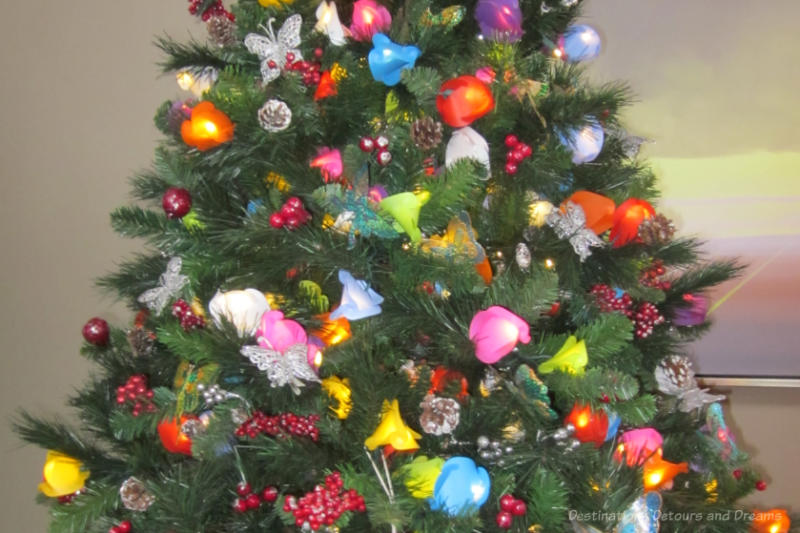
The All That Glows exhibit at the Manitoba Electrical Museum in Winnipeg, Manitoba highlights the history of Christmas tree lights and decorating
(The 2024 exhibit is entitled Watt a Season and runs from November 19, 2024 to January 11, 2025)
Driving in my home city on December evenings is a colourful experience. Many homes and businesses are decorated with Christmas lights, some with simple one-colour strands hung on the eaves, others containing elaborate multi-coloured decorations across entire yards. The stringing of outdoor electric lights grew from the tradition of lighting the Christmas tree indoors. And, of course, none of this would be possible without the invention of the electric light bulb in the late 1800s.
The Manitoba Electrical Museum in Winnipeg, Manitoba, Canada highlights Manitoba’s electrical history. Its Christmas season All That Glows Then and Now exhibit highlights holiday lighting from the 1880s to now and got me thinking more about the history of Christmas trees and their decorating.
Germany is credited with starting the Christmas tree tradition as we know it in the 16th century. The trees were traditionally lit with small candles that were glued with melted wax to the branches or attached with pins. In 1841, Prince Albert, Queen Victoria’s husband, introduced the Christmas tree to Britain. It became popular in Britain and around the world.
During the 1880s Christmas season, Thomas Edison introduced the first outdoor electric Christmas light display outside of his laboratory. In 1882, Edward H. Johnson, Vice President of the Edison Electric Company, decided to hang Edison’s lights on a Christmas tree and earned the title of “Father of the Electric Christmas Tree.”
In the Manitoba Electrical Museum All That Glows Then and Now display, Christmas trees from various time periods along with information about decorating trends of the day are located throughout the museum amid regular displays.
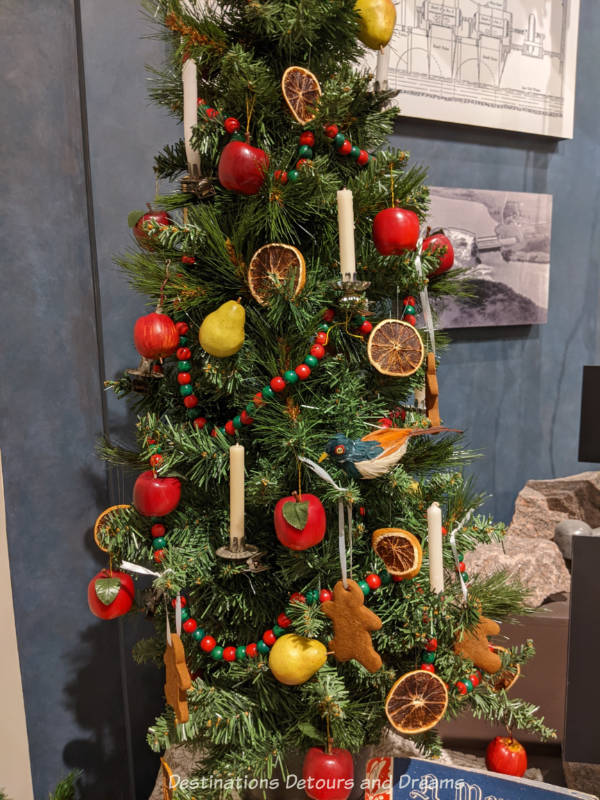
From the 1880s to 1910. candles, natural fruits, and homemade crafts decorated Christmas trees. Tree “skirts” caught wax drippings. Tree lights were invented during this period, but most homes were still without electricity. You could rent a generator and hire a “wireman” to light up your tree, but that was expensive. Electrically lit trees were seen mostly at high society parties. By 1900, businesses had starting stringing Christmas lights behind their windows.
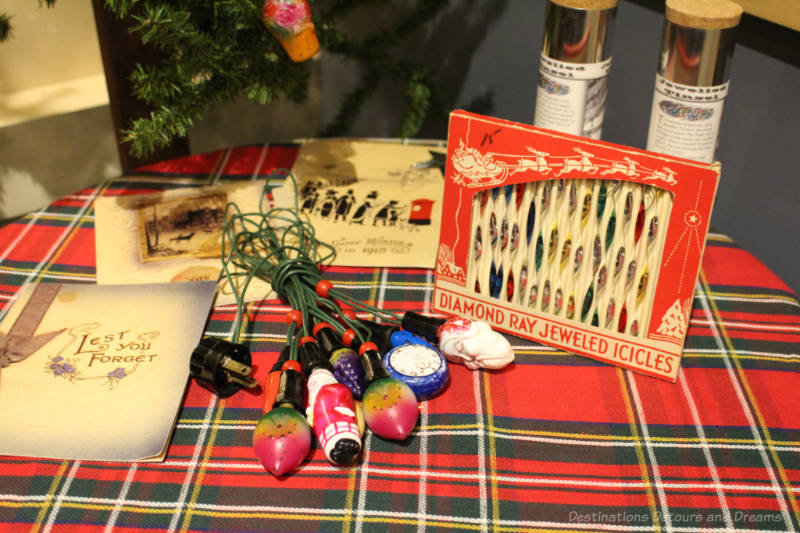
In the 1920s and the 1930s. more homes became wired and cone-shaped bulbs were popular. as were cardboard and beeswax ornaments.
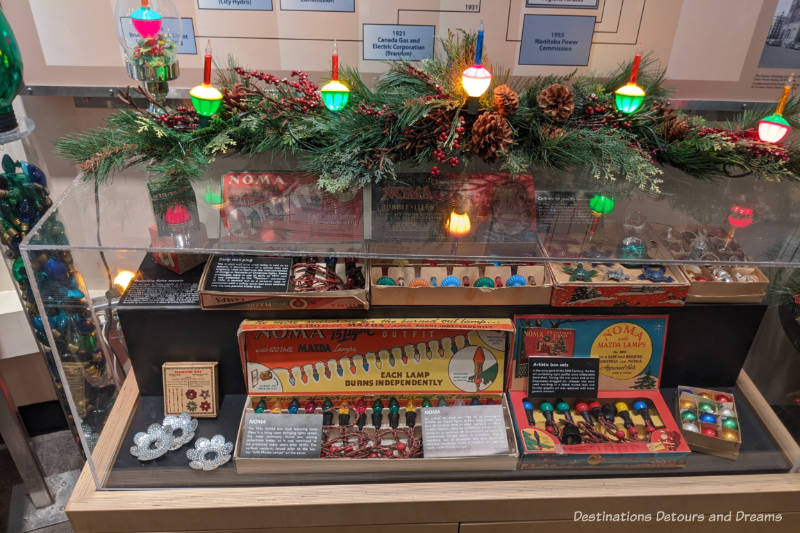
NOMA, a company started by the Sadacca brothers in 1925 from the union of 15 companies in the Christmas light business, was the largest Christmas light manufacturer in the world. It closed its doors in 1968.
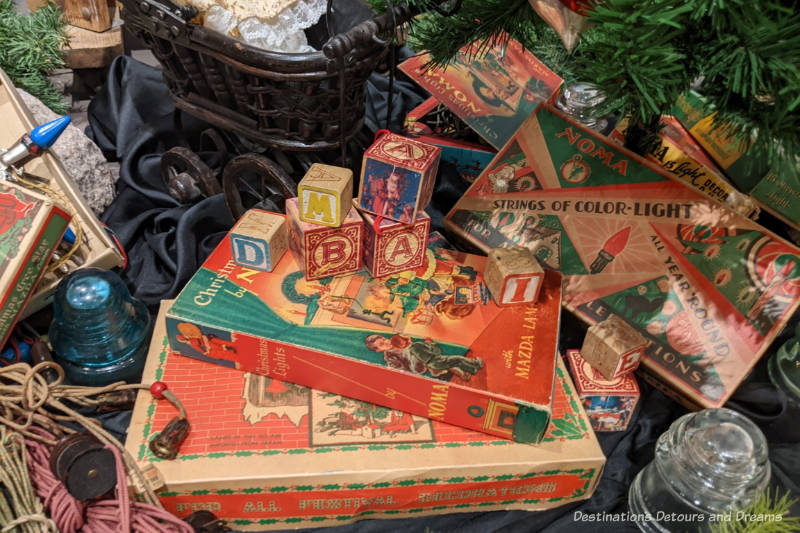
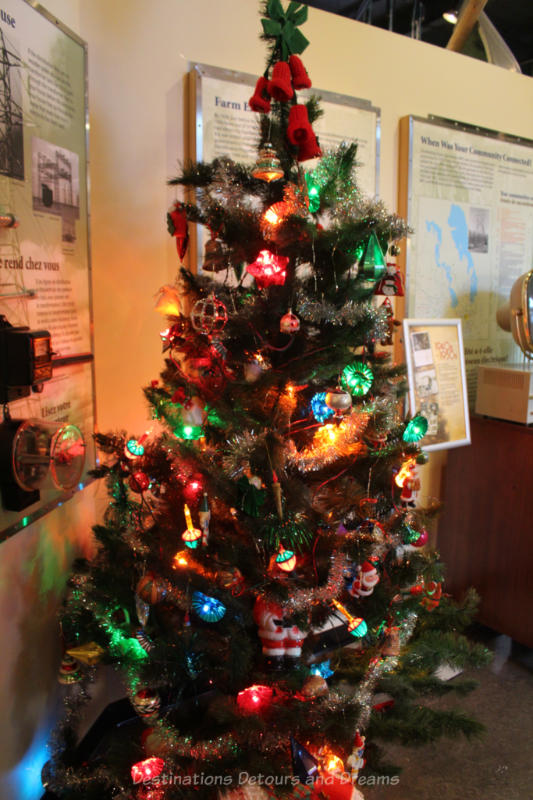
Tinsel and tin reflections showed up in the 1940s to 1950s. Blown glass ornaments from overseas were popular. NOMA novelty “Bubble Lites” were a craze.
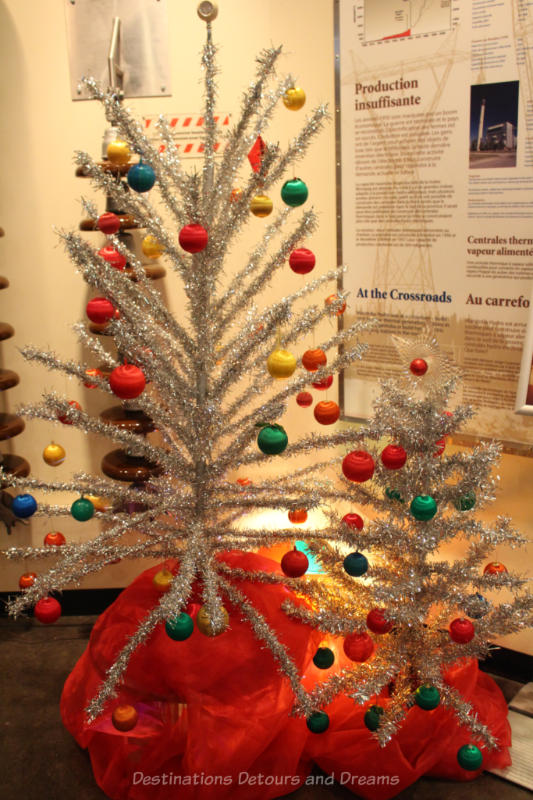
The 1960s and 1970s saw aluminum coloured, particularly silver, trees. There were foil garlands and plastic ornaments. Miniature fairy lights were popular. Exterior home illumination décor increased.
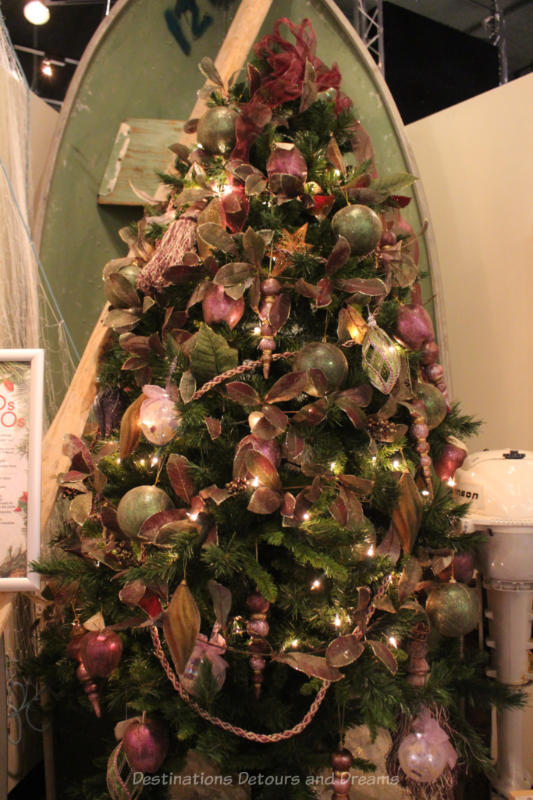
In the 1980s and 1990s, artificial trees became more natural looking, but there was also a return to environmentally friendly real trees. Themed decorated trees were popular as were novelty lights (e.g. bubble lights, candle flames). As more and more lights have been used outdoors as well as indoors, displays have become more elaborate.
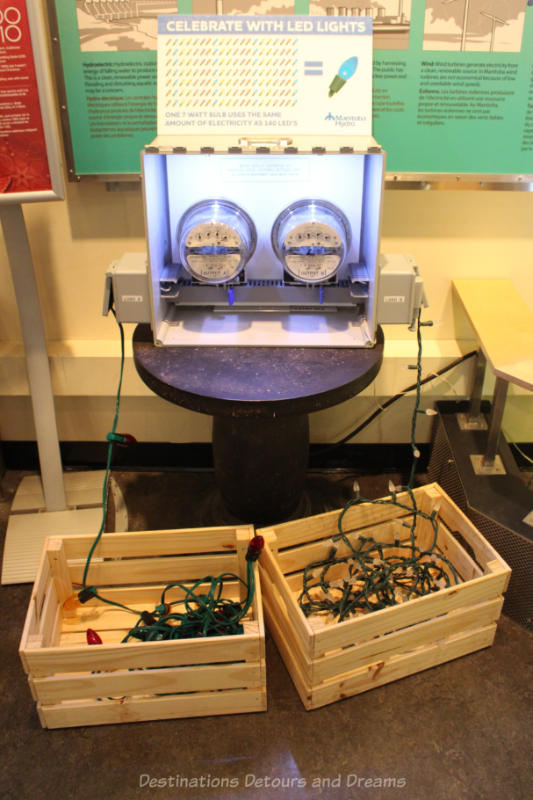
The most recent innovation in Christmas tree lighting is the move from incandescent bulbs to LED lights. LED lights operate approximately 90% more efficiently than incandescent lights. This is illustrated by one of the museum displays where a meter moves to show how much electricity is used when a string of lights is plugged in. The meter was very active when the incandescent string was plugged in. I had to look closely to see it move at all when the LED string was plugged in.
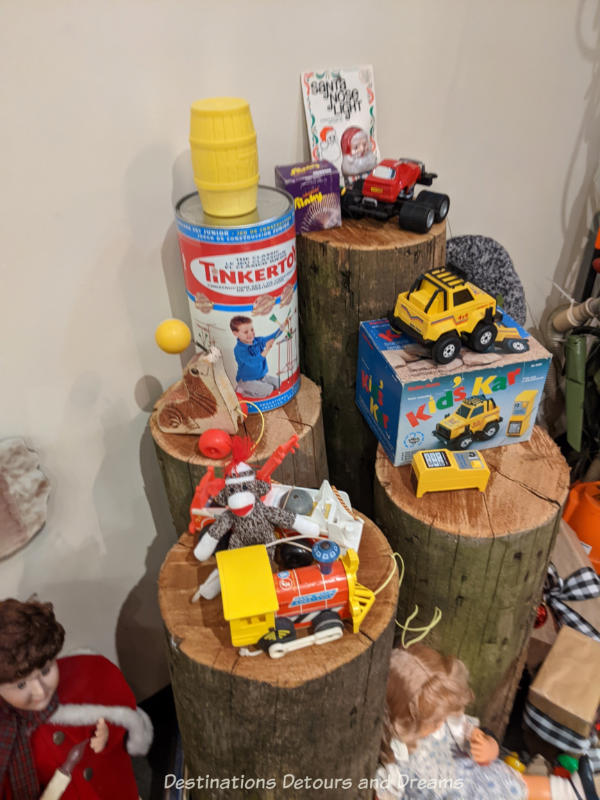
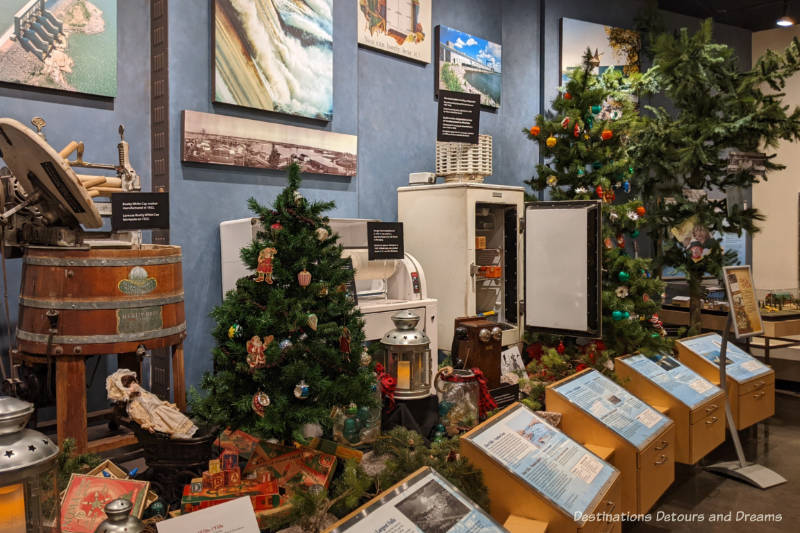
All the regular museum exhibits are still on display, but decked out for the season. Those exhibits are very interesting and showcase how electricity has changed our lives in a short period of time and what a feat it was to bring that electricity into our homes. Read more in my post Manitoba Electrical Museum and Manitoba’s Electrical History.
Check the Manitoba Electrical Museum website for their hours.
Never miss a story. Sign up for Destinations Detours and Dreams free monthly e-newsletter and receive behind-the-scenes information and sneak peeks ahead.
PIN IT
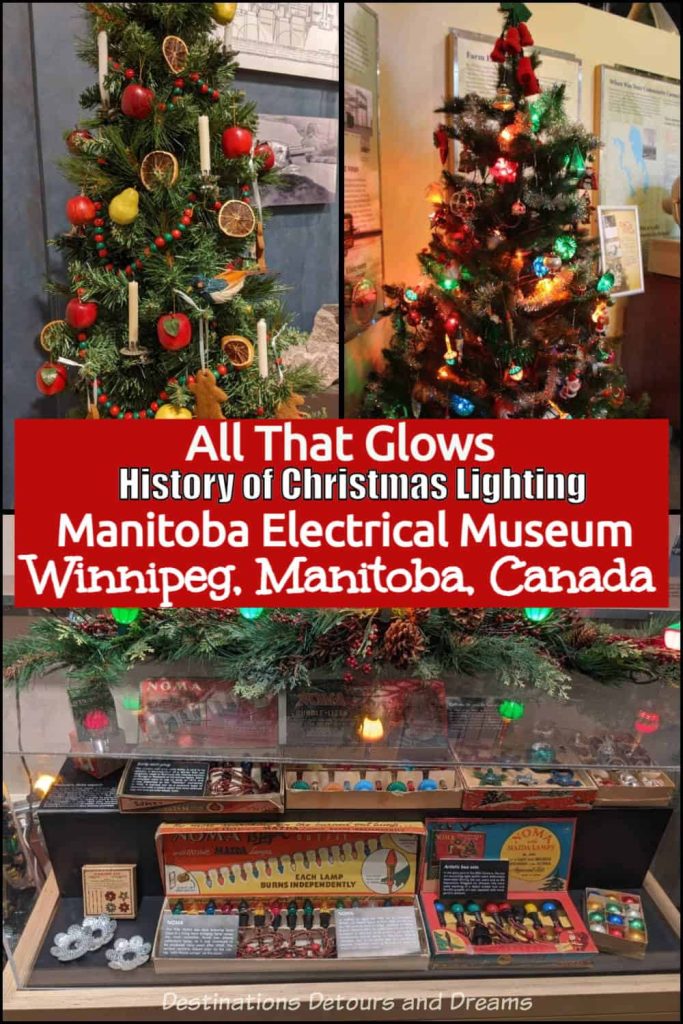
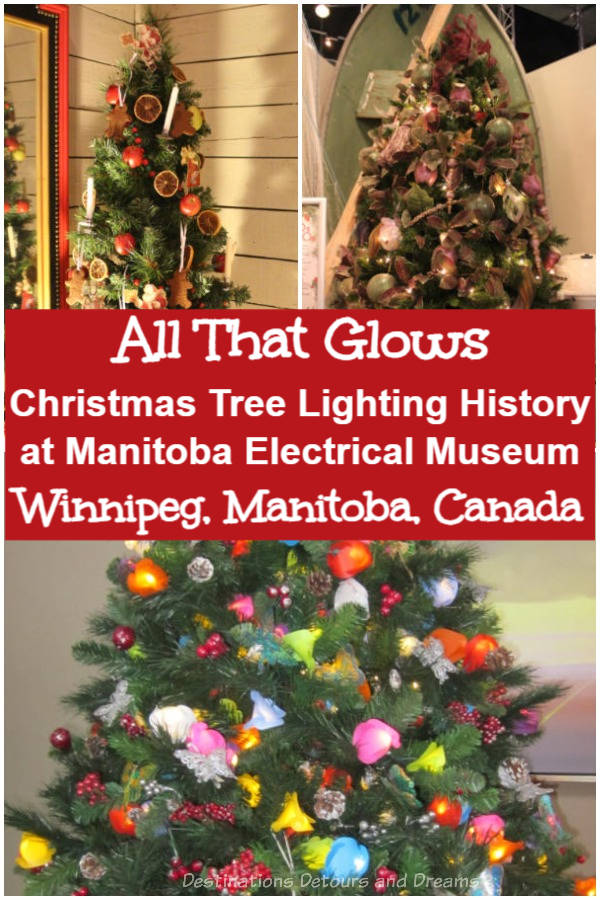



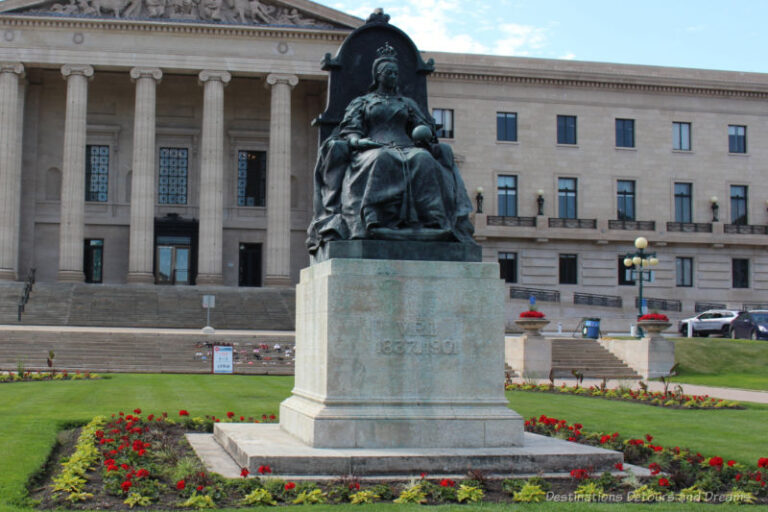
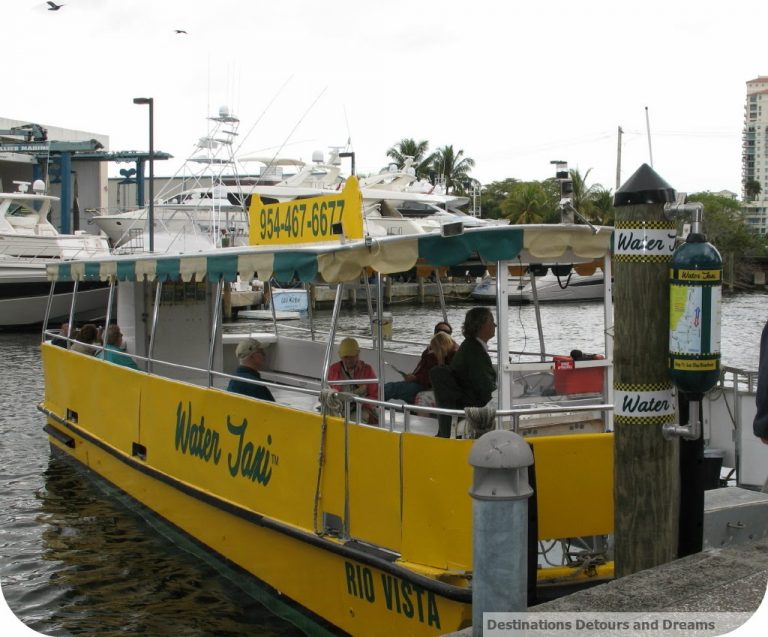


Wonder how many of those candle lit trees went up in flames?
Ken, I suspect there were more than a few Christmas tree fires.
Neat exhibit. I have a friend who has kept her family’s tinsel from the ’50s. She dutifully puts it on and takes it off her tree every year and she still has its original box. I have to say, it’s in pretty good shape.
Deb, what a cool tradition. It’s nice to have decorations with history and meaning, I’m not sure I’d have the patience to handle 60-year-old tinsel.